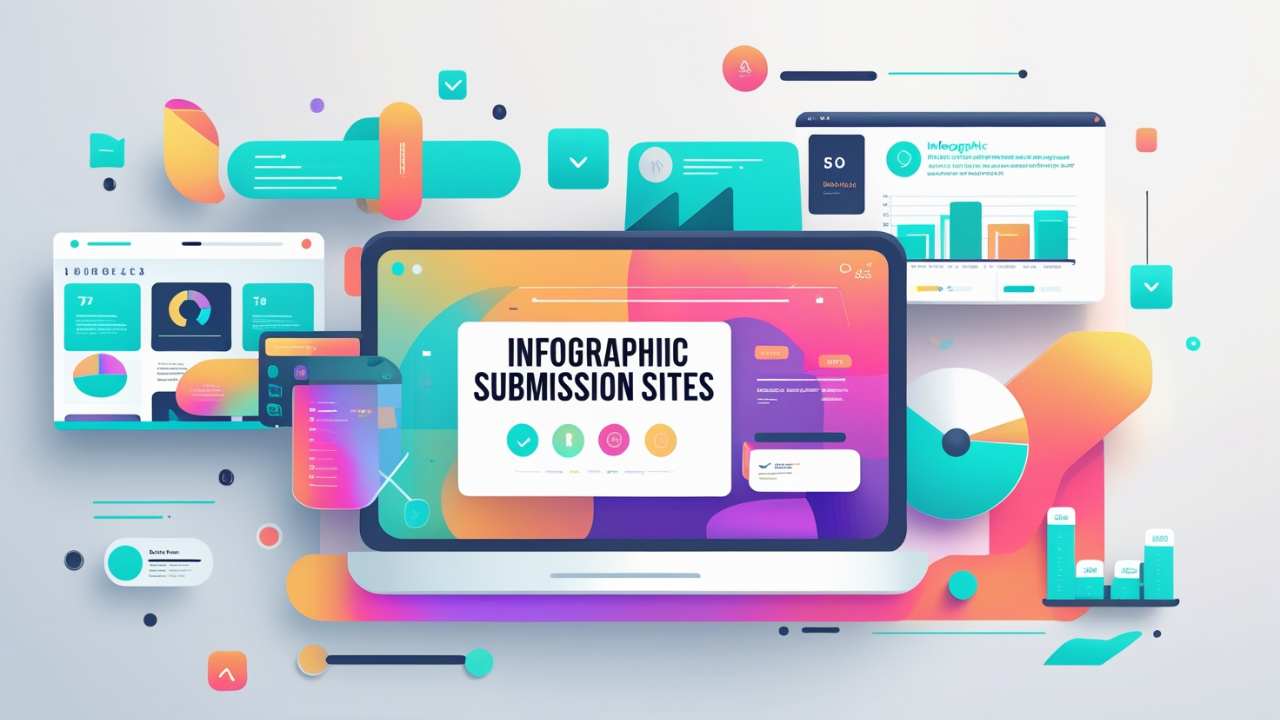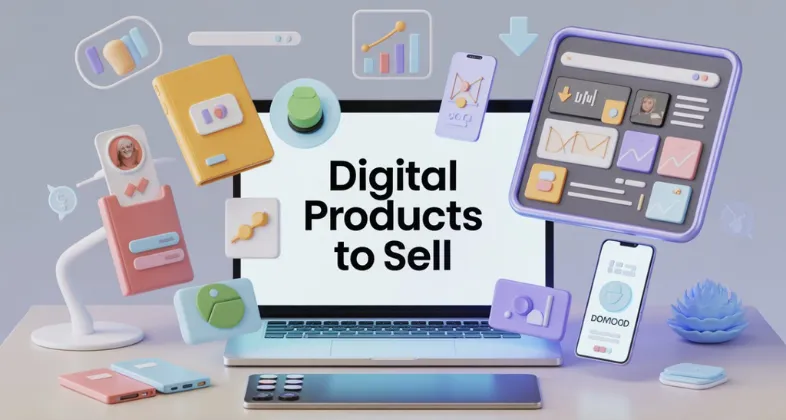Many people see a lot of visuals online. To grab their attention you need more than just plain text. Visual content is very important and infographics are one of the best types. Infographics mix data design and stories. They can make difficult information easier to understand and keep people interested. However creating a great infographic is only part of the job; sharing it with the right audience is just as important.
Infographic submission helps with this. For many years these platforms have allowed creators to show their work to more people. But in today’s world of SEO and digital marketing some people wonder if these sites still matter. Do they really exist?
This guide will take a close look at infographic submission sites. We will also look at what makes a good platform and how to submit your work step-by-step. Additionally we will share tips for making the most impact and discuss the benefits and downsides of free versus paid options. Finally we will provide best practices for getting your infographic seen beyond just submitting it to directories. Whether you are an experienced marketer or new to visual content this article will give you the tools you need to use infographic submission successfully.
What are Infographic Submission Sites?
Infographic submission websites are online platforms that act as directories or galleries specifically for infographics. Think of them as curated libraries where individuals, agencies, or brands can upload their visual content for others to discover, view, and even share.
These platforms primarily collect and organize infographics from various sources. Typically, they sort the content by topics, industries, or keywords, making it easier for users to find specific visual information all in one place.
Here are some key features:
- Focus on Infographics: Unlike general image hosting sites (like Flickr or Imgur) or broad social media platforms (like Pinterest which can feature infographics but isn’t solely for them) these sites are specifically for infographics.
- Directory Structure: Most of these Infographic Submission Sites work like directories allowing users to browse categories or search using keywords.
- Submission Process: Creators usually need to create an account and follow a specific submission process. This often includes uploading the infographic image, giving it a title, writing a description, adding relevant tags or categories and importantly including a link back to the original source (usually the creator’s website or blog).
- Discovery Tool: These sites help people who are actively looking for infographics on certain topics such as researchers, students, marketers, content creators or just curious individuals.
- Exposure Potential: By being featured on these sites infographics can reach audiences that the creator might not connect with through their own channels alone.
Types of Infographic Submission Sites:
- General Sites: These platforms accept infographics covering a broad range of topics (e.g., Visual.ly, Daily Infographic), making them suitable for content across various industries.
- Niche Sites: These directories focus on specific fields such as finance, health, or technology. Submitting to relevant niche sites often results in more targeted traffic and higher-quality backlinks, especially for businesses aiming to reach specific audiences.
- Free Sites: Many infographic submission sites offer free submission options. However, these often come with no guarantees regarding approval or turnaround time.
- Paid Sites: On paid platforms, users pay a fee for expedited review and guaranteed placement. These submissions often receive priority visibility, enhanced positioning, and promotional opportunities.
- Curated Sites: These platforms accept only high-quality, research-driven infographics that meet strict editorial standards. Being featured on a curated site enhances credibility and can significantly increase content visibility.
Why Infographic Submission Sites Still Matter for SEO & Marketing in 2025
Most infographic submission sites have lost their SEO value but they maintain a limited search engine optimization use in 2025. Not entirely. These platforms present multiple practical advantages but deliver them in slightly different ways when properly utilized during the year 2025.
High-Quality Backlink Acquisition:
The acquisition of high-quality backlinks remains the main reason why people continue to use these services. Reputable infographic submission sites carry respectable Domain Authority or Domain Rating scores that still hold SEO weight. A link from such an authoritative site sends strong link signals to search engines, indicating your website contains trustworthy and valuable content.
Search engines have grown smarter. When your content links with reliable sources from your niche field, your site benefits more from one strong reference link—even from a directory—than from multiple low-quality links scattered randomly. Always select sites that align with your infographic’s content topic when submitting.
Increased Brand Visibility and Awareness:
Placing your infographic across various submission platforms extends your branding and design style to new audience segments who might never have encountered your enterprise. Consistent use of cohesive brand visuals within your submissions helps cultivate brand awareness over time. Even a single view counts as an impression—marking the beginning of a prospect’s journey.
Referral Traffic Generation:
Visitors on infographic sites are there with clear intent—to find useful information. When your infographic delivers real value, it naturally attracts clicks. Viewers often follow the source link to read the original post or explore more of your site. This kind of referral traffic consists of genuinely interested users, turning passive viewers into potential future customers. The behavior pattern here is active, not idle.
Content Amplification and Extended Reach:
Your website and social media have a limited audience reach. Submission platforms help amplify your infographic’s reach by distributing it through their networks. Beyond their native audiences, these platforms often push selected content via social media and email newsletters, expanding your exposure to new viewers and platforms.
Social Sharing and Virality Potential:
Infographic submission sites typically include built-in social sharing features on their content pages. These allow users to easily share infographics across various platforms. This sharing can spark a viral spread, helping your infographic travel beyond the initial submission site. While social signals don’t directly impact SEO rankings, they do reflect content popularity—something search engines take into account indirectly.
Lead Generation (Indirect):
The infographic process can serve as a lead generator when paired with optimized landing pages. Direct viewers to a page featuring your original infographic and include CTAs, downloadable lead magnets (like checklists or guides), or contact forms. This setup encourages users to connect further with your brand and offerings.
Demonstrating Authority and Expertise (E-E-A-T):
Your brand will emerge as a trusted leader in your industry through regular creation and distribution of valuable and educational infographics across suitable platforms. Your brand becomes more respected by users when they discover valuable visual information under your name which helps satisfy the E-E-A-T standards of Google.
Diversification of Link Profile:
Relying on a single method—like only guest posting—can make your backlink strategy appear unnatural. Incorporating links from reputable infographic submission directories helps diversify your link profile. This variety is usually seen as a positive signal by search engines and may contribute to stronger ranking stability.
Key Features to Look for in an Infographic Submission Site
All infographic submission sites do not provide equivalent service to users. Different platforms must be evaluated by specific important characteristics before making investments in terms of time and money. Tips for selecting appropriate submission locations will enhance your prospects to obtain valuable outcomes such as elevated website traffic and backlink quality and enhanced site visibility.
While exploring infographic platforms, it’s also helpful to consider Image Submission Sites, which often support infographic uploads in PNG/JPEG format. These platforms can complement your strategy by offering additional exposure and authoritative backlinks. Evaluating both infographic and Image submission sites based on metrics like domain authority, niche relevance, and user engagement will help you maximize the impact of your content marketing efforts.
Here’s what to look for in and infographic sharing site:
Domain Authority (DA) / Domain Rating (DR):
The search engine ranking prediction metrics DA and DR from Moz and Ahrefs respectively come from analyzing website backlink profiles. The strength of an authoritative site can be determined by the scores that fluctuate from 1 to 100. A link originating from a high authority/domain rating site holds more weight for SEO than a link from a site with lower authority/domain rating.
Relevance and Niche Focus:
Your infographic should match both the fundamental content area and subcategories present on the target site. When you select a site related to your content you ensure your infographic gets in front of viewers who specifically want to see it. Search engines place greater importance on links that match your industry compared to those from sites that match less relevant domains regardless of their different Domain Authority scores.
Website Traffic Volume and Quality:
The actual visitor volume of the website should be substantial. The current visitors match the profile of your target demographic groups. The probability of obtaining views along with shares and referral clicks becomes higher as site traffic expands. Quality traffic visits your content since the visitors show genuine interest in your material and demonstrate potential conversion abilities.
SimilarWeb alongside Ahrefs allow users to measure website traffic volume together with audience demographic information. Choose websites that maintain consistent traffic along with rise in numbers from locations that match your target demographic.
Clear Submission Guidelines:
Users should find complete and specific guidelines regarding submission procedures that include file size parameters together with document type specifications and content requirements and link rules alongside categories for selection. The submission process simplifies when websites offer specific guidelines that allow infographics to fulfill their standards thus improving your chances of successful approval.
When websites do not define their submission standards this serves as a warning for potential contributors.
Active Moderation and Quality Control:
Active staff at the site checks incoming submissions prior to their publication on the website platform. Users should expect quality graphics across the website content or they must deal with poor and amateur advertisements. Active moderation shows that the site management team places importance on quality standards and user satisfaction. Your brand image gets better when you share content with reputable sources on their platform.
Cost and Transparency (Free vs. Paid):
The submission process requires payment or comes with free service. You should know both the price of payment status and the additional benefits included when paying such as expedited review times and prominent placements or followable links.
You must understand the pricing system in advance to make constructive decisions based on available funds and targeted objectives. Check websites that fail to show their charging system or guarantee results that seem too good to be real.
Top 75 Free Infographic Submission Sites List
Explore More Backlink Building Sites:
Step-By-Step Guide for Infographic Submission
The approach of submitting infographics to different sites becomes easier through an organized process which boosts your chances for acceptance while giving you meaningful tracking data. Here’s a step-by-step guide:
Step 1: Finalize Your Infographic
Only begin the submission process once your infographic is fully completed and professionally polished. Ensure that all data is accurate, sources are properly cited (ideally placed subtly at the bottom), and the overall narrative flows clearly. Correct all typos and grammatical errors. Use high-quality graphics, maintain consistent branding (logo, color scheme), ensure readability through proper size contrasts, and present your design with a professional, engaging look.
Step 2: Research and Select the Relevant Site:
Avoid submitting blindly. Choose the most suitable platforms based on your infographic’s topic or industry. Use search terms like “infographic submission sites”, “submit infographic”, or “infographic directory” in combination with your specific niche or field. Explore recent blog posts listing credible submission sites—but always verify each platform yourself using the key evaluation criteria previously discussed.
Step 3: Read Submission Guidelines CAREFULLY
This is one of the most important steps. Each site has unique submission rules, and failing to follow them will likely lead to immediate rejection. Look for pages labeled “Submit,” “Add Infographic,” “Guidelines,” or “FAQ.” Note down the specific requirements of each site in a tracking spreadsheet for quick reference.
Step 4: Prepare Submission Assets
Gather all necessary materials and adjust them for each submission site. Ensure your image file is in the proper format and resolution. Write a compelling, clear title and a unique, well-written description for each platform. Naturally incorporate relevant keywords. You may need to slightly modify your content when submitting to different sites.
Step 6: Submit the Infographic
Go to the submission form on your chosen site. Fill in all required fields using your prepared assets. Upload the infographic file, paste your customized title and description, choose relevant categories, and add appropriate tags or keywords.
Step 7: Track Submissions and Results
Keep your spreadsheet updated with the progress of each submission. Log the submission date and change the status as needed: Submitted, Approved, Rejected, or Live URL. Once a submission is approved, record the live link of your infographic for reference.
How to Effectively Submit Your Infographics for Maximum Impact
Doing nothing more than submitting your infographic as a routine task will not produce satisfactory results. Your infographic will deliver better visibility as well as quality traffic and solid SEO signals only when you make strategic submissions. The following strategy will help you obtain better results in your submission efforts:
Prioritize Quality Over Quantity:
Your infographic should only be submitted to a selected number of high-quality, mission-specific and expert-moderated web platforms instead of using a scatter-shot approach with numerous unsuitable directories. Onboard your link content with high-authority Infographic Submission Sites that serve your niche audience since their single feature delivers superior results over multiple spammy sites. Research pays off.
Craft Unique and Compelling Descriptions:
Every submission site requires distinct text descriptions for infographics. The search engines identify such text repetitions as duplicate content which yields no substantial benefit to users. For each submission create one exclusive summary which should be between 150 to 300 words and respect any maximum word requirements of the site. The summary should explore different points and advantages of the infographic.
Optimize Your Title:
Prepare a descriptive title that includes main keywords at the start. Keep your title direct. The title needs to stand out prominently among other artworks in a public gallery context. The incorporation of number-based titles which ask questions or present benefits attracts readers (such as “10 Surprising Stats About Renewable Energy Growth”).
Link Back Strategically:
All linkbacks must direct users to the original infographic presentation which resides on your website with supporting content together with appropriate CTAs. Your homepage links should stay excluded from this strategy.
Stagger Your Submissions:
Each day do not send your infographic to all 30 target sites simultaneously. An unnatural pattern becomes visible to search engines when this practice is used. Throughout your submission period distribute your infographics across different days or weeks. Begin with your most important sites and follow them with the remaining ones in your list. Such a distribution method leads to natural link acquisition patterns.
Free Vs Paid: When to Consider Paid Options
You will find free and paid infographic submission sites while exploring such services. The effective use of your resources demands you must grasp both positive and negative aspects between free and paid submission methods at suitable times.
Free Infographic Submission Sites:
Pros:
- An essential advantage is that these options do not have any costs associated with them. Ideal for startups, small businesses, or marketers with limited resources.
- The entry criteria remain simple because every individual can easily access these submission sites.
- Different free submission options through various market niches provide ample space for users.
- Some popular websites with significant traffic provide their services for free although they support their operations through user ads and premium feature sales instead of submitters fees.
Cons:
- The high number of submissions combined with minimal reviewer capacities causes reviews to extend for several weeks or several months.
- Users submitting content receive no promise from any platform for their work to be accepted for publication. Your infographic will most likely get rejected from a site when it fails to meet quality criteria or when their server becomes overloaded.
- Numerous free submission sites experience lower Domain Authority/Domain Rating than both established paid and highly curated platforms do.
- Free sites mostly provide backlinks marked with nofollow attributes that prevent passing SEO value to your website.
- The large number of infographic submissions actively seeking visibility will create high competition levels.
- Poor moderation practices in free sites have the potential to produce excessive spam content that damages the optimal branding environment.
- Basic submission forms with limited promotional choices constitute the typical features of free submission platforms.
Paid Infographic Submission Sites:
Pros:
- The services offer quick review processes which combine fast approval times from 24-72 hours and publication guarantees provided authors maintain adequate standards. Some guarantee placement.
- Paid platforms which function as well-established entities host websites with higher authority along with substantial website visitors.
- The payment will increase your chances to obtain valuable dofollow backlinks from directories though you should confirm such claims before proceeding.
- May offer premium placement (e.g., homepage feature, category highlight) or additional promotion through their social channels or newsletters.
- The payment barrier sometimes results in lower competition on the platform because it excludes weaker submissions thus creating a more refined submission environment.
- Project submitters can find enhanced support services available from better support channels.
Cons:
- The business requires financial allocation along with submission fee costs which span from minimal dollars to heavy amounts per submission.
- Paying for inclusion does not ensure the return of substantial SEO advantages along with significant traffic. The site’s payment value depends on its genuine quality and visitor activity combined with its connection to specific terms.
- Paid sites could claim high fees even though their website features shallow visitor numbers together with low authority level. Thorough vetting is essential.
- The practice of paid links may produce negative effects in search engine perception when organizations fail to combine it properly with organic link building methods but legitimate directory listings remain acceptable to search engines.
Best Practices and Tips for Successful Infographic Outreach
Submitting your infographics to directory platforms works as one strategy but building a successful promotional plan demands reaching a wider audience. Your efforts will reach your highest potential when you expand your thinking past directory submission alone. The following guidelines with tips will help you perform complete infographic marketing outreach:
- Start with an Outstanding Infographic: The first step requires an outstanding infographic which cannot be skipped. A poorly researched, badly designed and uninteresting infographic needs no outreach to save it. Your infographic needs to present both aesthetic attractiveness and unambiguous readability as well as brand compatibility.
- Host it on Your Own Website First: Your first move should be hosting your infographic directly on your website through a special page dedicated to it or a post page. The original location which requires your reference in this context. The infographic should be embedded in a comprehensive framework which includes an introduction followed by data analysis, also a secondary section identifying the essential elements and a final segment for conclusion.
- Develop an Embed Code Generator: Blogs and websites should have simple and direct methods to embed your infographic and automatically redirect users back to your original source page. Numerous generators for online embed codes exist available to users. You can find this code just beneath your infographic that lives on the landing page.
- Personalize Your Outreach Emails: Personalize each message. Address the person by name. Use specific and personalized reasons for reaching out to them including references to their latest articles along with insights into their reader demographics.
- Use Social Media Extensively: The extensive use of social media should involve sharing complete infographics as well as their selected parts on Pinterest and LinkedIn along with Twitter and Facebook and Instagram. The format adjustment depends on the platform requirements where Stories need vertical slices but Twitter requires individual stats displayed in posts.
Conclusion
These platforms are no instant formula to SEO success, but really an incredible addition to a broader, diversified method. By picking the right heir strategic relevance and good authority of sites, write information in the descriptions, to link to well-optimised source-page and from well-optimised source-pages to reach, markets assured relevant resources with invaluable linking, traffic and quality referrals say, of well-optimised SEO page sites, getting publicity online, hyperlink marketing too increase being search of the requisite, this is the benefits how selecting.
Through combining quality infographic submission and promotion as part of your complete content marketing strategy, you can effectively leverage the ability of visual storytelling in order to reach your SEO and marketing aims within the continuously changing digital environment.
FAQs
Have infographic submission sites done the trick for SEO?
Yes, strategically. Putting in high quality infographics to the respected submission sites with valid backlink (using dofollow) still have their use.
Do all infographic submit websites provide dofollow link?
No. There are numerous free sites that issue nofollow links which, whilst they don’t pass SEO “link juice”.
How many infographic submission sites I need to submit.
There’s no magic number. Be more interested in relevance and quality rather than size. Find a handpicked of the best sites, your particular infographic content and its audience (maybe 5-15 quality spots).
Is it legal to submit the same infographic to multiple websites?
Yes, in general it’s fine and customary to submit an infographic image to multiple directory sites that are related.



